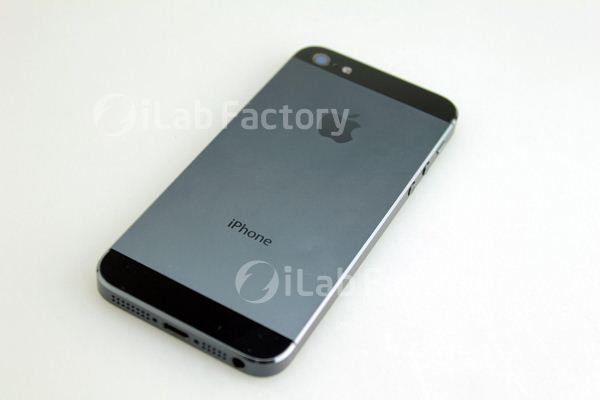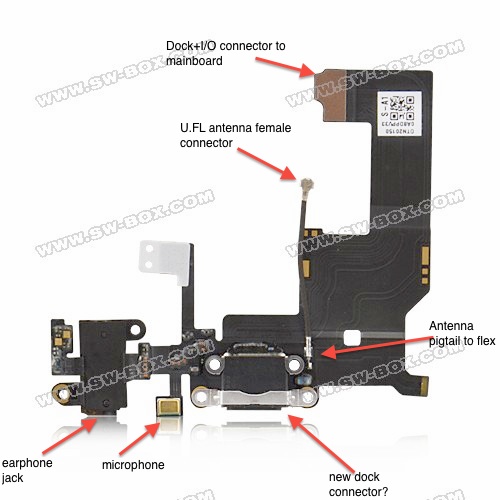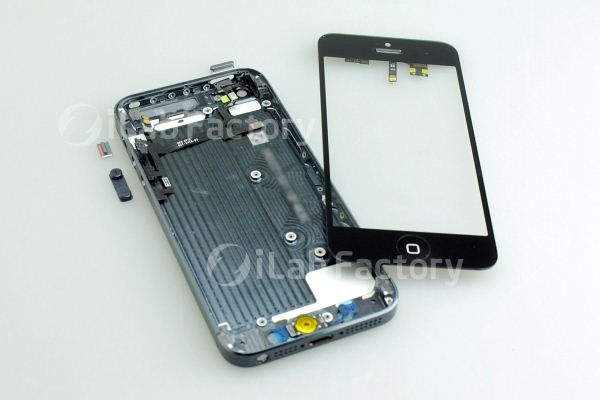Preparing for the iPhone Next: Rumors Analyzed
by Brian Klug & Anand Lal Shimpi on August 27, 2012 9:40 PM EST- Posted in
- Smartphones
- Apple
- Mobile
- iPhone
While we typically don't comment on rumors we don't know to be true at AnandTech, we often get requests to help set rational expectations ahead of major iDevice launches. The shroud of secrecy around major Apple launches can pave the way for both sensible and unrealistic conclusions.
Given the growth of Apple's iPhone/iPad devices, it has become increasingly difficult for suppliers in the chain to remain mum about any changes. Similar to how we often get early access to CPUs, motherboards and other components out of Taiwan, it has become increasingly commonplace to see leaks of iDevice components out of the big ODMs in China.
Apple is largely expected to launch its sixth iPhone next month. The historical cadence of design, SoC, and cellular changes are in the table below:
| Apple iPhone - Historical Trends | |||||||
| Release Year | Industrial Design | CPU Architecture | GPU Architecture | Cellular Architecture | |||
| iPhone | 2007 | 1st gen | ARM11 | MBX-lite | Infineon S-Gold 2 | ||
| iPhone 3G | 2008 | 2nd gen | ARM11 | MBX-lite | Infineon X-Gold 608 | ||
| iPhone 3GS | 2009 | 2nd gen | Cortex A8 | SGX-535 | Infineon X-Gold 608 | ||
| iPhone 4 | 2010 | 3rd gen | Cortex A8 | SGX-535 | Infineon X-Gold 618 in 4 GSM / Qualcomm MDM6600 in 4 CDMA | ||
| iPhone 4S | 2011 | 3rd gen | 2 x Cortex A9 | SGX-543MP2 | Qualcomm MDM6610 (MDM6600 w/ ext. trans) | ||
| iPhone Next | 2012 | ? | ? | ? | ? | ||
Trends are pretty easy to spot in the table. With the exception of the first iPhone, the industrial design appears to be on a 2-year cadence. The CPU and GPU architectures are also on the same 2-year cadence. From a silicon standpoint even the cellular architecture is trending towards the same 2-year cadence, with a few notable exceptions (e.g. GSM/CDMA iPhone 4 divide).
Based on historical trends alone it's pretty easy to conclude that we'll see a 4th generation chassis, a pair of ARM Cortex A9s and a PowerVR SGX 543MP2 under the hood. Add the assumption of LTE (a reasonable one to make) and you have a pretty believable story. It turns out the currently available evidence helps corroborate this, but let's dig through what's out there to see how this all fits.
Chassis & Display
The chassis is largely a known quantity by this point. Enough examples out of China have surfaced to support the current working theory of a 4-inch diagonal (16:9) display in a slightly taller chassis with roughly the same width. Put simply, it's a new taller aspect ratio, which also has the consequence of including a larger 4-inch, 640 x 1136 display. The result is a change only in one dimension for developers to worry about.
The other big rumored change is a move from on-cell touch sensing (which places the drive and detect ITO layers above the LCD assembly) to an in-cell touch solution. In-cell being the operative word because the drive layers are integrated into the LCD gating (or use it natively), or on the color filter layer. There's some debate about what counts as on-cell and in-cell that isn't quite settled, but ultimately what it boils down to is a thinner display stack that will contribute significantly to the reduction in overall device thickness that is rumored for the upcoming iPhone.
While the industrial design remains quite similar at a high level, there do appear to be some major changes. Where the 4 and 4S designs used front and back glass with an external metal band for support, the leaked designs out of China feature a metal unibody construction with cutouts for RF windows at top and bottom. There's enough evidence of this from the CNC machine marks visible on examples, and moreover moving to a larger form factor requires a beefier chassis.

Black regions at top and bottom are likely RF window cutouts
With top and bottom RF windows (which appear to be glass) there shouldn't be any implications on antenna performance for cellular. If you followed our coverage of the evolution of Apple's cellular antenna design from the iPhone 4 GSM, to 4 CDMA, to 4S, you'll notice that this is a clear next step, largely inheriting the top/bottom antenna split from the 4S which fully mitigated deathgrip. Interestingly enough the exterior band appears to have a different chrome finish rather than the matte stainless steel of previous designs.

Bottom flex cable, annotations ours
Other things like moving the 3.5mm headphone jack to the bottom of the device and the mini 9-pin dock connector are fairly well corroborated by leaks with components that all fit together inside the case. Interestingly enough, parts indicating the mini dock connector and relocated headphone jack have been circulating for nearly 4 months.











131 Comments
View All Comments
doobydoo - Wednesday, August 29, 2012 - link
The SG3 has a 1.5 GHz MSM8960 Dual Core Krait, not a quad core - in the USA.8steve8 - Tuesday, August 28, 2012 - link
Krait is much faster per core, quad core isn't the only or best way to improve performance.swb311 - Tuesday, August 28, 2012 - link
I'd guess about 1.2 Ghz. which will be more than enoughtipoo - Monday, September 10, 2012 - link
My best hope would be that they put those chip designer purchases to good use and pulled a Krait, no need for apps to use four cores, just two faster cores.Aikouka - Tuesday, August 28, 2012 - link
I see people talk about the litigation with Samsung affecting Apple's relations with Samsung, but I don't really suspect that is the case. The reason is that Samsung is a rather large company, and if you've worked for a large company before, you know how separate the different business areas truly can be. Do you think Samsung Foundries (the business area that handles chip manufacturing) really wants to hurt their numbers just because Samsung Mobility (the business area that handles mobile devices) is in a spat with one of their customers? I *highly* doubt it. Samsung Foundries more than likely passes up its financials just like Samsung Mobility to the overall corporation, and I highly doubt that they want to report such a large delta as losing Apple would be. Apple just wants what's best for Apple, which might be switching to TSMC as you mentioned.In other words, I don't see Samsung (Foundries) dumping Apple, but rather Apple dumping Samsung (Foundries).
akibakun - Tuesday, August 28, 2012 - link
Dear Editor,There are some politically charged watermarks Japanese in the phones posted on the NFC page. MacRumors has censored the watermarks.
http://www.macrumors.com/2012/08/26/photos-of-asse...
You may want to do the same.
etamin - Tuesday, August 28, 2012 - link
So Xiaomi is going to have a Krait device in the market before a Cortex A15 device comes to market?alxx - Tuesday, August 28, 2012 - link
Would be nice to see a rouge gpu core but probably unlikely maybe in ipad miniWill be interesting to see if the updated itunes drops this year for one of the product launches or have to wait until early next year.
No sure that a lot of people are going like Apple's maps app.
It loads slower than google maps(iphone 4) and the level of detail is different for icons/places/shops(some worse some much better)
Seems to do directions better than google maps
swb311 - Tuesday, August 28, 2012 - link
It's in beta. It will actually load faster thanks to vectored graphics.alxx - Tuesday, August 28, 2012 - link
No kidding. How else do you think I'm using it.At the moment its not loading faster and is getting stalls worse than google maps